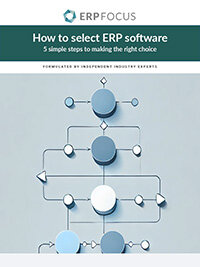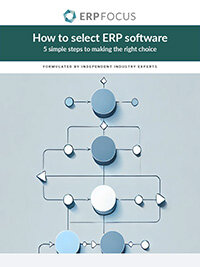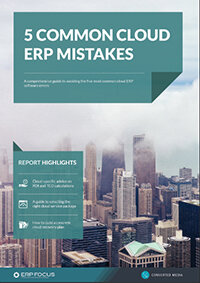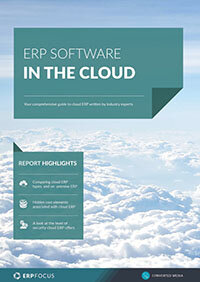Choice is the new cloud when it comes to ERP
In the past, ERP software deployment options were limited to pretty much one: on-premise. But then the hybrid (hosted) deployment option, and later, the Software as a Service (SaaS/Cloud) model, entered the scene with such a bang that terms like cloud, hybrid and SaaS have become part of our everyday vocabulary. Just like on-premise deployments, SaaS and Hybrid deployments have their pros and cons.
We see the age old tradeoff between price and convenience every day in our personal lives. For instance, 7-Eleven vs. Costco, high price convenience store vs. low price big box (both are thriving). In the deployment world, the marketplace counterpoints of price versus convenience are playing out again as SaaS/cloud (convenience) and on-premise (affordability) find their respective places in the ERP landscape. Let’s take a deeper look.
There are three common software deployments on the market today:
On-premise, purchased hardware and perpetually licensed software deployed in-house
Hybrid, perpetually licensed software, hosting on rented hardware in a data center
Cloud/SaaS route of renting both the software and hardware from a vendor
On-premise ERP
On-premise ERP means buying new equipment and licensing new software. Because ERP systems are typically kept for 10 to 15 years, on-premise ERP has the highest initial cost of ownership, but the lowest long-term cost of ownership. For businesses with strict confidentially or regulatory concerns, on-premise ERP may be the only option.
The primary hidden expenses of on-premise implementations are the soft costs of ERP ownership (such as software and database updates and maintenance routines) and fewer redundant systems, backups, internet and power options at reasonable prices.
Hybrid services ERP
Hosting new software in a data center has become a popular alternative to on-premise ERP. Hybrid or hosted services address most of the upfront hardware costs associated with a pure on-premise deployment and eliminate the issue of end-of-life hardware, while still allowing for control of updates. Hosting centers can also provide fully redundant systems, backups, Internet service and power.
The downsides to hosted implementations are continued exposure to strict confidentially or regulatory concerns, software and database updates and maintenance are still the company’s responsibility and the cost of hosting over a 15 year period will often exceed the cost of on premise hardware.
SaaS & cloud ERP solutions
Newer SaaS and cloud solutions offer the upside of an almost complete lack of ERP IT footprint. No software or database updates, no backup or redundancy concerns and certainly no hardware concerns. SaaS and cloud solutions are relatively painless to maintain.
There are downsides to cloud implementations though. Cost can be a key issue. While cloud or SaaS solutions do have a much lower initial cost of purchase, in ballpark figures, a SaaS or cloud system’s total out-of-pocket cost of ownership over a 15 year period can be twice the cost of an on-premise solution. Additionally, as your ERP software is probably not the only technology in the building, you will likely still have to keep IT staff on hand for desktop and other business software support and infrastructure. This can take a serious bite out of the soft cost savings assumed in many cloud cost saving calculations. A few other potential downsides of cloud solutions are performance (often, SaaS solutions don’t perform as quickly as on premise solutions), there are no options to go off service if cash is tight, and you don’t have complete access to your data (so be sure to explicitly understand your ability to access it for a potential downstream system conversion before entering into any cloud agreements).
There is no one right solution
There is no one right solution, the right choice depends on each company’s unique situation. On-premise is more affordable and comes with a sense of total control. Cloud is easy, but comes with a higher price and some control and security concerns. More and more, we are seeing manufacturers lean toward the middle, hybrid option: Purchase the software licenses outright and control your own data, and host the hardware in a reliable data center.
When it comes time to evaluate ERP vendors, find one that offers all three options: on-premise, hybrid or SaaS/cloud. For manufacturers today, choice is the new cloud.
Free white paper

How to Select ERP
Learn to select your ERP in 5 easy steps by following our expert's advice

Featured white papers
-

Five common cloud ERP mistakes
Get your comprehensive guide to avoiding the five most common cloud ERP errors
Download -

Related articles
-

Why you shouldn't underestimate cloud ERP consultant costs
Make sure to take the cost of a consultant into account when planning your cloud ERP budget
-

Secret KPI: Why Your ERP Implementation Team Matters More Than Software
Learn how Godlan ensures successful ERP implementation for manufacturers with proven strategies &...
-

Cloud ERP vs on-premise ERP: an objective comparison
Are you choosing between cloud ERP and on-premise ERP? This balanced guide will help

